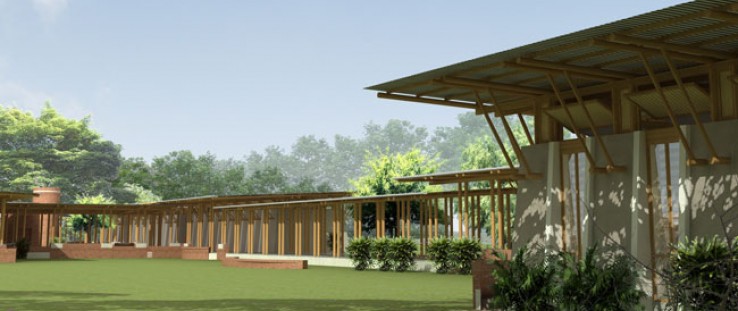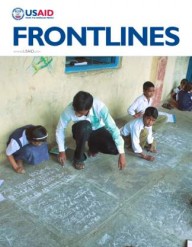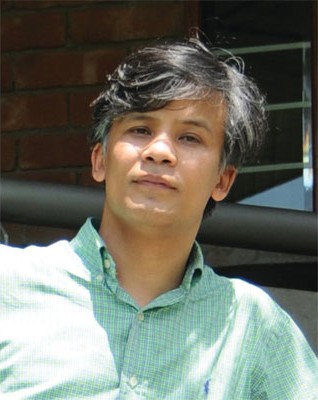 Computer-generated 3-D visualization of the pediatric clinic to be built in East Africa, showing the use of local materials and indigenous building techniques.
Skeikh Ahsan ullah Mojumder
Computer-generated 3-D visualization of the pediatric clinic to be built in East Africa, showing the use of local materials and indigenous building techniques.
Skeikh Ahsan ullah Mojumder
 Computer-generated 3-D visualization of the pediatric clinic to be built in East Africa, showing the use of local materials and indigenous building techniques.
Skeikh Ahsan ullah Mojumder
Computer-generated 3-D visualization of the pediatric clinic to be built in East Africa, showing the use of local materials and indigenous building techniques.
Skeikh Ahsan ullah Mojumder
In the early 1960s, James Walden worked on a USAID-supported project to establish Bangladesh’s first school of architecture as part of the Bangladesh University of Engineering and Technology (BUET). Walden, who now owns his own architecture firm in Stamford, Conn., recently returned to the school to deliver a keynote address at its 50th anniversary commemoration.
Today, the BUET School of Architecture has a total enrollment of approximately 400 students and is one of the most prominent architecture programs in South Asia. It no longer receives USAID funding but is, in fact, making its own inroads in contributing to cost-effective and sustainable design for the developing world.
In 2009, a BUET team, led by associate professor Skeikh Ahsan ullah Mojumder, won first prize in an international architectural design contest, called “Design for the Children,” to develop an adaptable pediatric clinic that could be modified to fit different sites in East Africa. These two interviews together represent the completion of a circle—how a smart U.S. investment decades ago is continuing to pay dividends throughout the developing world.
USAID: Why did you choose to participate in the “Design for the Children” competition?
SKEIKH AHSAN ULLAH MOJUMDER: I believe architecture has an amazing power to act as a catalyst to reform, regenerate and revitalize the society. As a three-dimensional interpretation of socio-cultural phenomenon, it stimulates, influences and shapes our living environment, economy, culture, technology, education and all other aspects of our life. It is a silent interaction and a dialogue that bonds the people with the space, and through inspiration creates a scope to express the potential of both. It acts as a regulatory driving force of human behavior which helps to realize their inherent power, of both space and man, an outcome of perfect revival and inspiration.
My team and I wanted to be part of the development process of East Africa by participating in the competition, and we will feel great if our architecture can stimulate people to develop their life, to help them to realize their inherent power, to reduce child mortality and give a new hope for the next generation of the society.
USAID: Tell us a little more about the competition.
Ahsan: “Design for the Children” was an international design competition challenging architects and designers from around the world to develop an adaptable, sustainable, culturally responsive pediatric clinic to be built in East Africa. With more than 300 entries from over 30 countries of the world to choose from, the best and most interesting ones have emerged. The top 50 designs were exhibited and the winners were announced at Humanity for Children’s Bubbles & Sweets Fundraiser on May 2, 2009.
This design competition called for a basic pediatric clinic that would address childbirth, disease prevention and treatment—the ever-so-prevailing problems of Africa. It was supposed to be a satellite clinic to support a larger medical hub. The main intention of this international design competition was to improve the health of mothers and children through the construction of nonprofit clinics and to develop a model for [a] pediatric clinic that can be modified to fit different sites in East Africa.
USAID: What is unique about your design idea?
Ahsan: The image of Africa today, regarding the issue of child mortality due to poor health condition[s], has influenced the concept of this design, which believes that even the scope of designing of a pediatric clinic model for East Africa should reinforce a sense of hope. The dimensions of activities of this pediatric clinic should not be constrained to the term “clinic”; rather, it would become a symbol of expectation for [a] better future for children, an emblem of aspiration for the people of Africa.
Participation of the common people, social interactivity and cultural responsiveness are keys toward the implementation of this design idea. Today’s Africa, where one in every nine sub-Saharan African children dies before age 5 … demands nothing more than the awareness of general people—especially the mothers. This pediatric clinic aspired to become a center of interaction for awareness and simultaneously function as an institution for them. [The] aim of this design was to emphasize and influence this social interaction, not only amongst mothers but also from people of every level of the society, which is inevitable for the progress of [the] health condition of [African] children.
A social bond … is aimed to be achieved through this project, where people come for a common dream, the birth of a child—representing a new hope and future—[and where they] interact, share and develop trust and interdependency.
In one sentence, the pediatric clinic will become [a] hub of happiness and health, [and a] source of inspiration.
USAID: USAID was a strong supporter of the inception of the school of architecture during the 1960s. Would you say BUET is giving back or contributing to development through its unique mandate?
Ahsan: I believe the aim of any educational institution for higher studies … is to inspire students to explore their potential and intellectual capacity. … I don’t think teachers teach students; rather, they work as catalysts to inspire students to discover [their] potential through research, investigation and interaction to accumulate information which further helps to execute [that potential]. … Many students and professionals of BUET thus have contributed in social development and lifestyle revitalization. “Design for the Children” is one of many examples.
USAID: What is your ultimate goal when it comes to your work? What do you want to be remembered for?
Ahsan: Through my architecture I want to motivate and inspire people, which can create a positive impact in the development process of our society as well as the whole world.
COMPANION ARTICLE
Read the accompanying interview with USAID alum James Walden, who helped establish Bangladesh’s first architecture school in the 1960s
.










Comment
Make a general inquiry or suggest an improvement.